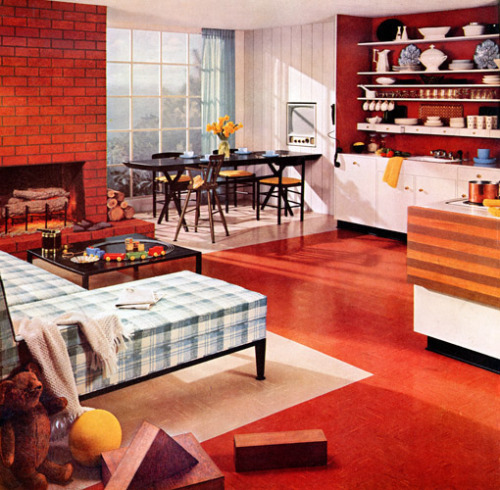
Eero Saarinen, County War Memorial Center, Milwaukee (1954-57) (via f***yeahbrutalism)
My first blog was a Tumblr, A Bit Late, which I started in June 2009. I picked Tumblr because the New York Times told me it had the nicest templates, and I proceeded to go about using it all wrong. It was weeks before a friend suggested I include photos on my posts. I wrote at length. I never used tags. I completely failed to comprehend what Tumblr was good for. As I've said before, I'm a Late Adopter.
But midway through last year, when I started blogging for Design Observer, I had a Tumblr epiphany. I began following more of what people call "single-serving Tumblrs": 1950s ephemera (heavy on glamor), Scandinavian home design, brutalism, architecture everything. What was I supposed to be doing on Tumblr? Admiring the images, and reacting. I was supposed to like every Paul Rudolph and Kevin Roche building that filtered across my dashboard. I was supposed to reblog Jane Austen board games, Almanzo Wilder's homestead application, Mies's Resor House drawing. Below each image I just said what I felt, in two sentences or less. It was the equivalent of Twitter criticism. My Tumblr is far from single-serving, but it has now become a visual map of my interests, notes on my enthusiasms, in a less self-conscious (and less articulate) way than this blog. There's something so pleasant about seeing wonderful things, new things and old things, with so little effort.

Homestead Proof Testimony of Almanzo Wilder, 09/12/1884 (via todaysdocument)
Some days my Tumblr dashboard reminds me of college, when I was supposed to spend all day at the A+A Library, working my way through a big stack of photo-heavy books. Archive of Affinities, a grad student Tumblr, works the same way, and I think my dissertation would have gone much faster if I had uploaded my best discoveries daily. In fact, as I make the depressing rounds of publishers, I often think my dissertation could have been better as a Tumblr. My argument about the affinities between the Deere tractor, the Deere logo and the Deere Headquarters could be brought home by a stream of carefully organized images, comparisons made by adjacency rather than words. Tumblrs create a narrative, some on purpose, some by accident.
Which is why I recently found myself discussing with a designer why I thought his industrial design client should not publish a commemorative book, but should start a commemorative Tumblr. (I couldn't believe it when those words came out of my mouth.) Considering this history project, my mind reassembled its pieces as a blog, asynchronic, motley, sketchy. Rough rather than smooth. An archive of affinities rather than a resolved history. There's a reason so many archives are using it.

1956 interior design with Armstrong Excelon tiles (via theniftyfifties)
On a Tumblr, every kind of memory could be collected and streamed, linked, as so many of the "f*** yeah" genre are, by a single word. Vintage ads and color samples, quotes from literature and scenes from movies, new product, old furniture, cleaning tips and housewives' economiums. All these things would sit easily next to each other (and, I believe, attract a larger following) on Tumblr. A book seemed like it might be just another vanity production, dead and not living a second life of likes and reblogs and potential new fans. A Tumblr seemed generative, and potentially creative. It only took me two years, but I felt like I was finally thinking in Tumblr.

